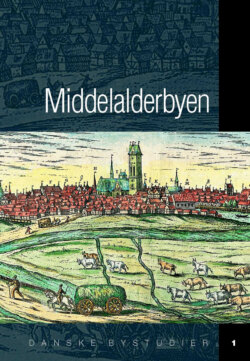Читать книгу Middelalderbyen - Группа авторов - Страница 34
На сайте Литреса книга снята с продажи.
Summary The Medieval Town as a Monetary Arena: The Example of the Town of Lund
ОглавлениеBy Peter Carelli, PhD, The Dunker Culture Centre, Helsingborg, Sweden
The period c. 1075-1250 may be described as a ‘long twelfth century’. It was a very dynamic and eventful period in Danish history. Society underwent a number of changes that were to influence most people either directly or indirectly. The emergence of a monetary economy is one of the radical changes that took place at this time.
By studying the coins found by archaeological excavations in Lund in Skåne it is possible to shed light on the process of monetarization. Of the 3,551 coins found in the town, just over half come from 35 different hoards, while the remainder can be described as single finds.
The chronological distribution of the hoards shows that they were continually deposited during the history of the town of Lund. The single finds, however, show a chronological development. Some coins appear to have been used in Lund as early as the first half of the eleventh century. The small number and the heterogeneous composition, with a heavy predominance of foreign coins, nevertheless suggest that the use of coins was limited and rather random. In the second half of the eleventh century and the first half of the twelfth century, however, there was a significant increase in the use of coins. The great breakthrough for the general use of coins did not come until the second half of the twelfth century. The quantitative and qualitative change in the use of coins in the second half of the eleventh century should probably be viewed as the first steps towards the monetarization of society. Yet this development was slow, and it was not until the reign of Valdemar I (1157-1182) that a developed monetary economy could take shape and catch on definitively.
The geographical spread of coins can also be used to show when the urban space was monetarized. In the earliest phases, up to the middle of the twelfth century, the vast majority of coin finds are concentrated in the town square and the buildings around it. In the subsequent phases we see a gradual spread of coin finds until they finally comprise virtually the whole area of the town. Based on these results, it is reasonable to assume that it was during the period c. 1157-1241 that the monetary economy had its definitive breakthrough in everyday urban life.
The monetarization process has also been compared with the situation in other Danish towns and in the Danish countryside. This study shows that the circulation of coins was fairly limited in town and country alike until the middle of the twelfth century. During the period 1150-1250 there was a breakthrough for the use of coins in everyday trading and offering situations.
